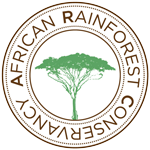I spent most of last week visiting the Eastern Arc Mountain ranges of the South Ngurus and Udzwunga Scarp – two project areas that ARC is currently supporting. Upon arriving in the bustling town of Morogoro (home to Tanzania’s famed Sokoine University of Agriculture) last Tuesday afternoon, I was met by Emanuel Ndossi, TFCG’s Field Officer for the South Ngurus. We discussed some of the work he is overseeing in the nineteen villages under his management, and decided the next day to head out to the village of Kanga – a two-hour drive from Morogoro, along a winding dirt road. After a dinner of beans, rice, and wild greens (what has become my standard lunch and dinner here), I fell soundly asleep after the long day’s journey.
In Kanga, a village of nearly 3,000 people, we met with a community beekeeping group who described how their activities are helping to conserve the forest. Since they keep their hives just on the edge of the forest reserve they are very aware of what is going on in the forest and are quick to take action at anything that could pose a threat to their livelihood, including burning forest for agriculture, illegal cutting of trees, and charcoal production. The group, consisting of 30 men and women, currently has 20 hives and has completed two harvests. Their most recent harvest yielded about 20 liters of honey and was sold for 5,000 Tsh/liter (just over $3/liter). They are happy with their progress so far and we discussed ways that ARC can help them scale-up this project to produce even more honey in the near future. More on this initiative to come!
After an overnight back in Morogoro, we were on the road the next day to head farther south down to the Udzwanga Scarp. Here we met with Field Officer, Renatus Gujema, who gave us an overview of the types of projects he and his team of three are undertaking. These include environmental education in 12 schools for over 1,000 students, tree planting, and support to income generating activities. We met with representatives from the various activity groups – everything from handicrafts to animal husbandry to beekeeping to fish ponds – and later made the rounds to visit some of the projects. My favorite was meeting with the women who are weaving mats out of local grasses and watching the dying (vibrantly intense colors) and weaving process. If only I had more room in my suitcase I would have purchased a few to take along with me!
During my last post I posed the question: “Is it possible to simultaneously advance forest conservation and improve the lives of the communities who depend on them?” In a conversation with TFCG Senior Technical Advisor, Nike Doggart, I gleamed a bit more insight in to how to answer this question. She explained to me that once you have really good forest management in place that is when you can really focus on the community development aspects of the work. In addition, when the attention turns to helping a community with their most immediate needs (education, health, and water) they try to focus on those activities that will not directly enhance or increase deforestation. So we are making progress towards an answer, but it seems it will always take a lot of work to strike the fine balance between conservation and development.
I will be back later this week with a final reflection post and lots of photos. Off to pack and get ready for the journey back home!
Kate McLetchie, Executive Director
Dar es Salaam, Tanzania

Leave A Comment